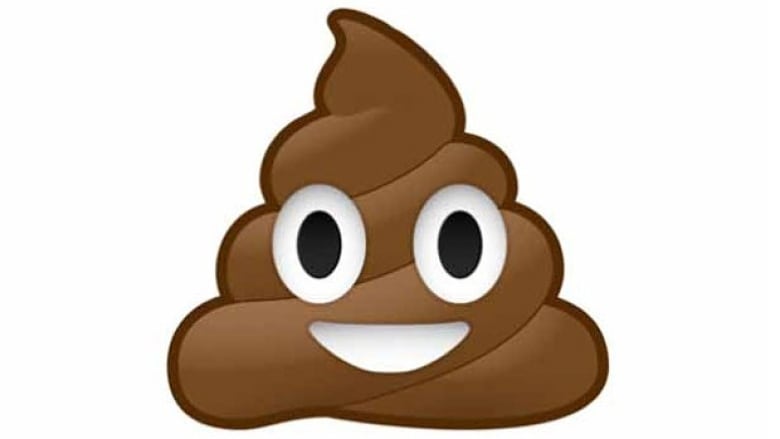
Can Blue Food Coloring Cause Green Poop?
Yes. Blue food coloring could cause green poop. In addition, purple and green food coloring can also cause green poop. Different people have different poop colors, textures, and shapes, depending on their meals and health condition. Ordinarily, normal poop is sausage-shaped with a shade of brown, with a relatively firm texture.
However, these features of stool keep changing, depending on what you eat, your medication, or your illness. According to the poop chart, normal poop is in the middle, it is neither too soft nor hard. This article delves into the causes of green poop and when to worry about it.
Ordinarily, poop should be brown, but several factors could cause it to turn green. During digestion, bile turns the food brown. In some instances, the food passes too fast through the digestive system making it hard for the bile to turn the waste brown. In other cases, high amounts of green-colored foods could cause the poop not to change color. Some of the possible causes of green poop are;
Green Colored Foods And Colorings
If you have a large amount of chlorophyll-filled foods such as kale, broccoli, and spinach, your poop will most likely turn green. Food dyes and colorings can also turn poop green. When you peep at the waste in the bathroom after eating loads of greens, you should not be alarmed by that green color. It should turn brown soon after. Should the color fail to normalize long after your last green meal, you might consider contacting your doctor for a checkup.
Blue Or Purple Foods And Dyes
You may notice your poop turns green after enjoying a meal or treat of purple candies or popsicles. When food passes through the digestive system, bile turns brown, but with the consumption of large amounts of purple or blue foods such as blueberries, grapes, and red or deep purple wine, the waste will turn green. This color changes to brown after all the colored food in the system gets out of the body.
Gastrointestinal Infections
Bacteria infections like those caused by Salmonella and E.coli could affect the digestive process, making poop turn green instead of the normal brown.
Viral infections in the gastrointestinal system could turn poop green. Such gastrointestinal infections could cause the food to pass through the system so fast and leave them without proper processing by the bile. When your system has an infection, you are likely to get green diarrhea.
Stomach Parasites
Parasitic infections can cause green poop. If you notice your poop has turned greasy, has a foul smell, abdominal cramps, nausea, and excess painful gas could indicate parasitic infection.
These parasites can enter the body by eating infected food, water, or surfaces such as hands and utensils. When you notice these signs, consult your doctor for treatment. If the parasites stay long without treatment, they might damage the stomach lining.
Medication
Some drugs like indomethacin could alter the color of poop to brown. Birth control shots such as Depo-Provera could also lead to a woman’s poop turning brown. When you are on certain medications, they could alter the digestive process making the bile ineffective in turning the poop color. The color will soon revert to the usual one after you are done with the medication.
Sickness
Some gastrointestinal and liver diseases do alter the color of your poop. For instance, IBS-M and IBS-D cause diarrhea which might lead to green poop as it passes through the system fast before the bile can turn brown.
Crohn’s disease irritates the small intestines affecting the digestion process. The poop will revert to the normal color after the sickness is treated. However, for chronic conditions, the green poop could keep on recurring.
Food Intolerance
People with food intolerance might experience green poop after eating green, blue, or purple-colored foods. The stomach rejects the food you are intolerant to and causes it to pass through the digestive system fast without proper processing by bile. The solution to restoring the usual brown color is to stop eating the food you are intolerant to.
Cholecystectomy
Cholecystectomy is a procedure where the gallbladder is removed surgically. The gallbladder stores bile and its removal mean that your waste will not be turned brown. Some people who have had a cholecystectomy soon revert to having the usual brown poop.
When To Get Worried
The color of poop changes depending on the food you have eaten, the drugs you are taking, or your general health condition. In most cases, the color will go back to normal after a while. However, some signs could make you worry and want to see your doctor.
- When the color of your stool does not change even after you stop eating green, purple, or blue-colored foods, you might get worried.
- You experience abdominal pains, crampings, nausea, vomiting, fever, and fatigue.
- Unexplained weight loss.
- Excessive diarrhea.
- If you are passing bloody poop.
- If the texture and shape of your poop do not change, even with a change in diet, medication, and health, you should get worried.
- If the poop is greasy, has a pungent smell, and has an abnormal texture.
- If you have too many or few bowel movements. Ordinarily, an adult poops thrice per day to three times a week. Anything out of this bracket may be abnormal but not necessarily worrying.
- If you experience pain while passing poop you may want to see your doctor.
- If you have difficulty in passing stool.
In conclusion, blue coloring can cause green poop. It occurs when food passes the digestive system without the bile in the stomach-turning it brown. This could be caused by sickness, parasitic infections, consumption of food with excess food colorings and dyes, and large amounts of green-colored foods.